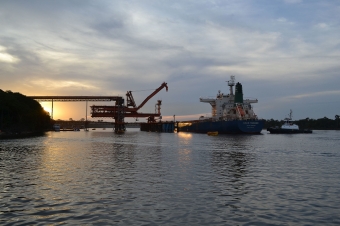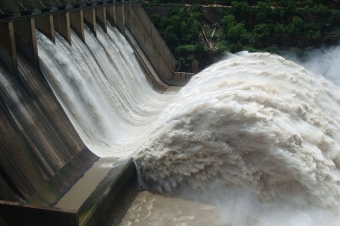Summary:
It is an activity that focuses on the application of concepts and regulatory concerns for the profile of foreign direct investment (FDI) in Brazil and from Brazil. Students intend to articulate the various interests and regulatory requirements in the case of FDI, bringing targeted inputs for analysis of the Petrobras case in Bolivia, explored in the following classes. To do so, they take on different cores of interest in an investment game.
Objective:
- GENERAL GOALS: dealing with the application of concepts and regulatory concerns present in the previous literature, which analyzes the profile of foreign direct investment (FDI) in Brazil and from Brazil;
- SPECIFIC GOALS: to lead students to identify the diversity of interests present in the FDI drive, checking how it reflects in its regulations, whether at the national level or internationally. Through a game, the students, in order to assume different positions and counteract these concerns, can apply the concepts in basic bibliography, and also anticipate the seizure of more abstract categories present in this exercise - such as "country-middle-income" "investor" - in addition to further involvement of these categories the case to be reviewed in the next class: the case of Petrobras FDI in Bolivia.
- It is intended that students:
1) learn and know how to apply different concepts involved in IEDs;
2) learn and know how to distinguish the different interests present in the FDI drive.
Dynamics:
- TEACHING METHOD: playing method, in which students take on different profiles of actors involved in an IED process;
- REQUIREMENTS: There mandatory prior reading, consisting of: selected pages of official reports (CAMEX and attachments ECLAC). There is also further reading. It was also suggested consistent complement previous activity in the navigation of specific web pages related to classroom content - FDI: UNCTAD; CENTRAL BANK; WORLDWIDE BANK; IISD; CINDES (accessed on 6/11/13).
Access to these pages resumed a general orientation course for students on access to economic data and centers specialized in certain areas of Economic International Law (as in the case of UNCTAD for FDI);
- INTRODUCTION TO THE DYNAMICS: an open debate takes reading materials with the students before the start of the exercise (15 minutes). For the game, 4 groups are divided in class; each of them takes a profile: 1) investor (private entity, company); 2) State investor; 3) the receiving State; 4) civil society of the receiving State. Each group of students receives a block of "post-it" for indicating criteria and legal instruments that would elect if they were:
a) the investor (1) and had to decide to implement or not the IED in the receiving State (3);
b) the investor State (2) and had to set policies to support the export of FDI to the receiving State (3);
c) the receiving State (3) and had to establish its FDI attraction policies of Investor State (2);
d) civil society (4) and wished to press the receiving State (3) for sustainable growth policies;
- DEVELOPMENT OF THE DYNAMICS:
1st ROUND) students had to front a traditional FDI situation - stream of a developed country (high-income) to a developing country (upper middle income - which could be Brazil). Duration: 20 minutes;
2nd ROUND) the context changes for the new FDI flow profiles, developing countries (upper middle income, which could be Brazil) to developing countries (lower middle income, which could be Bolivia). This second phase was designed to bring together students of the case to be treated in the following meetings on Petrobras FDI in the natural gas sector in Bolivia. Duration: 10 minutes;
In the end of each round, a representative from each group went to the front of the room to paste the "post-it" on the screen that was displayed the power point with the figures of each profile. When pasting their regulatory demands, the student should justify and dialogue with the other presented by other groups. The order of presentation was indicated above - the investor to civil society;
3rd ROUND) to complete this flow, the Professor's dialogue with the whole class was resumed and then established a counter flow (civil society to investors) in order to counteract interest shown by all profiles. Duration: 25 minutes;
- END OF THE DYNAMICS: after two rounds (flow and counter flow), the students had five minutes to discuss between them. In 3 minutes, each group should indicate what has changed in order to change the characteristic of the profile that represented (5 groups). In the remaining 10 minutes it was discussed the counter flow and indicated the focus of the next class in Case Petrobras-Bolivia;
- ATTENTION IN THE CLASSROOM: some observations can be made from the experiences with activity:
1) at other times, students of the 3rd year already had the specific case addressed on another perspective, in terms of contracts with another Professor (Andrew Correa, see the cards "Petrobras Case"), which allows students to know well about the structure to expand and put in question who thought concepts are already consolidated;
2) the implementation of the exercise depended on the resumption of the must-read previously available and consistent context for the characterization of direct foreign investments taking place in Latin America and in identifying the profile of the internationalization of the region;
3) early in the course of 2013, in which the exercise was applied once again, there was a conversation to understand the profile of the group and outline what kind of dynamics works and what are the areas of interest of the students. Alongside the role of the Professor in the broader education of the student, being a technical content, it is important to align the profile of the class, which, in this case, influenced both the option to focus more on the private side that the public as to the choice the base material. Be identified for example, class of difficulty dealing with the schedule of activities outside the classroom, especially with a large volume of material, which is why it was decided by more objective texts (primary sources, primarily) and answers in the classroom;
4) while applying the exercise, it is necessary to consider the limitations of foreign language students, as the CEPAL text is written in Spanish and part of other texts and websites are in English;
5) to perform the exercise is necessary to have specific physical structure that is, a data show and former student access to computers and internet for the preparatory part of the dynamics;
6) when working with a real case such as this, one has to be careful with the material students bring from the media, trying to deconstruct prejudices and make them see the other side of the case.
Evaluation:
- GRADE EVALUATION: The form of evaluation consisted in assigning grade of student participation during the dynamics, according to the following criteria:
1) attention and concentration in the classroom (hear and understand the professor and classmates);
2) read the indicated texts (especially when the Socratic Method is applied);
3) teamwork, when applicable; and
4) contribution to the reasoning proposed by the professor to the class (including the presentation of issues and correlation of ideas);
The statement of participation allows the Professor to evaluate the student's progress in learning all the skills and competencies that the course aims to develop the student.
Observation:
Copyright from the cover page image:
Image: "Oil platform P-51 (Brazil)", 2009, made available by Wikimedia Commons user "ArionEstar" photo "Disclosure Petrobras / Brazil Agency" under the Creative Commons BY 3.0 license.





